So, for those of you who already have eliminated many sources of chemicals from your personal environment, this post really isn’t for you. But if you’re like most people, you’re horrified and a little overwhelmed by the deluge of media about toxic chemicals in our food, water, clothes, cosmetics and cleaning products. This post is to help you overcome the fear of that tidal wave of information and start making changes in your surroundings to decrease the exposure to you and your loved ones.
Sometimes I feel like I’m walking around in a chemical soup. Every time I open the email or internet there’s a new article about the off-gassing of VOCs (volatile organic compounds*) from furniture, or flame retardants in children’s clothing, or plastic like compounds in the sandwich bread of a famous sandwich chain. It’s hard to sort out sometimes. Have we always been exposed to this many chemicals? Was there really a simpler time when chemicals weren’t added to our food and drink, cloth and building materials? Maybe we were always exposed to chemicals but just didn’t know it. One thing I do know: more and more, we are learning about how the chemical additives are linked to all kinds of problems in our lives, some physical, some environmental.
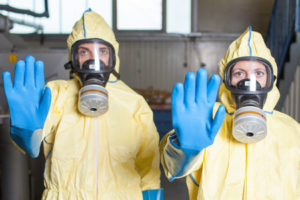
The list is long and getting longer…
Physical
Anxiety/Depression
Asthma
Allergies
Obesity
Breast cancer
Rashes
Eczema
Environmental
Air pollution
Water pollution
Algae blooms in the water supply (from lawn fertilizers)
Harm to pets (increased cancer risk)
“Dead zones” in the ocean – depletion of oxygen in the water
Contamination of fish populations
It’s really scary! When I started reading about the link between common chemicals in the home, I wanted to find a way to reduce the exposure to my family and myself. So I started reading labels. It really started after I had the babies. When they were little, every thing that came near them had to undergo strict examination. No bad stuff for my little ones! Soap, lotion, sunscreen, bubblebath, shampoo and conditioner, laundry detergent. Then I realized that I was buying double cosmetics (one for the adults and one for the kids) spending a ton of money. And, why was I buying these chemical concoctions to use on my body anyway? If it was bad for my kids, it couldn’t be very good for me, even if I am grown and bigger. The body is constantly remodeling itself – skin, bones, hair, vital organs, everything is undergoing daily maintenance. I don’t need my kidneys and liver to have to spend extra energy detoxifying unnecessary junk – there’s enough coming in through unavoidable toxins in food, water and air! So I wanted to decrease the amount that I could, at least at home. Here are some things I do…
1. I make laundry detergent.
Ok, I can see I’ve lost you already. I know – am I really asking you to give up your Tide or Gain? Hear me out… First, the perfumes that make your clothes smell so “fresh” are incredibly strong. They are responsible for lots of rashes, reactive airway disease, and there may be some evidence that links scented products to obesity and breast cancer. I see patients regularly who have irritation “down there” who think they must have a yeast infection, when really it’s chemical irritation from the perfumes in their laundry detergent. Commercial laundry detergents also have “optical brighteners” which trick the eye into thinking the whites and brights are whiter and brighter than they really are. You think your clothes are cleaner than they are, but really it’s the brighteners! Also, if you’re buying liquid detergent, you’re paying for a lot of water. I know you can use liquid detergent as your stain treater too, so you don’t buy a second product, but still…
There are lots of recipes in the internet for DIY laundry soap, including liquid options. Here’s what I use:
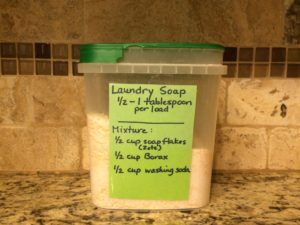
Andrea’s Laundry Soap
1 cup Washing Soda
1 Cup Borax
1 C Fels Naptha soap, ground in food processor (or you can buy soap flakes, if you can find one without optical brighteners)
Mix together in a dry container, cover and use 2-3 tbsp per load.
2. No air fresheners
Spray, stick, plug-ins and many other perfume containing products contain phalates, which have been classified by the EPA as a probable carcinogen. No thank you! I like things to smell nice, but I had to find alternatives for these items. Easy ways to freshen your home include leaving a bowl of white vinegar on the counter in the kitchen to neutralize odors, simmer cinnamon sticks and cloves in water on the stove, use a cool water diffuser with essential oils, and for the bathroom I love a product called Poo-pourri (a toilet spray of essential oils). It works really well!
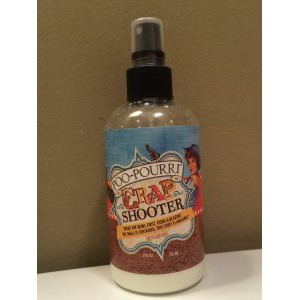
3. I open the windows
Air in any building can get stagnant when there’s no flow through, and our homes are no exception. We spend lots of time in recycled air that goes through our HVAC units over and over. Unless you have severe seasonal allergies that prevent it, crack a few windows from time to time and bring in some fresh air!
4. We use edible moisturizers
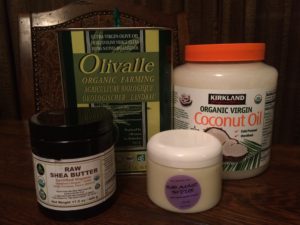
Seriously, if I can eat it, I figure it’s ok to moisturize with. In the summer we use organic olive oil and coconut oil, the same ones I cook with. When we need something heavier, I order raw organic shea butter and mango butter (I know these aren’t food oils!) I don’t buy many commercial lotions unless I feel really good about the ingredient list. If you want to know what to look for in the list of ingredients, the Environmental Working Group (ewg.org) goes through each ingredient and rates the risks associated with them. They also do a nice job with sunscreens as well!
5. No lawn chemicals
I believe in fresh air and outside time, especially for the kids. Since my kids are homeschooled, they are out in my yard most days. When I started reading about risk of childhood leukemia, asthma and possible impact on neurological development in children, that was then end of lawn chemicals, at least in the back yard (I live in an HOA community and my kids don’t go on the front lawn). I’d like to do away with all fertilizers and chemicals on my lawn, but I haven’t figured out how to make it work. Yet.
I hate that when people water their lawns, all those chemicals run down the storm drains and into our water supply. Algae blooms fed by fertilizer run off have contaminated municipal water supplies and caused the water to become undrinkable, until the algae was cleared. (Look up algae bloom in Toledo, Ohio).
6. No shoes in the house
There’s lots to read about the chemicals from fertilizers and pesticide residues in the dust on the ground that are a big source of contamination of your home that you, your family, and your visitors bring inside on their shoes. The Japanese have it right – shoes are for outside and should be removed at the door. This was a tough one for my parents, who think it is rude to ask people to remove their shoes. But I spent so many consecutive years with small kids on the floor, putting toys from the floor in their mouths, that I decided I’d have to risk being rude. Contamination from shoes worsens your indoor air quality and brings dirt, chemicals and germs that you can easily limit by keeping shoes out of your inner sanctum.
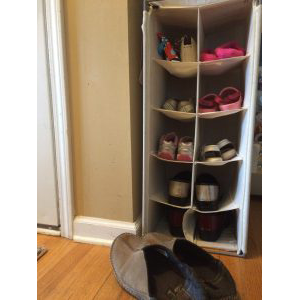
7. I make my own cleaning products
It’s not as hard as it sounds. Remember the bowl of vinegar that you put out to absorb odors? Well, that came from the big bottle you brilliantly bought along with a few empty spray bottles to make your own cleaning products! Put a spray bottle of diluted vinegar in tap water under the sinks in the kitchen and bathrooms, and you’ve just stocked every high traffic area with highly effective, non fragranced, dangerous chemical free cleaners for pennies. Add baking soda for a scouring aid, and for a few more pennies you can scrub to your heart’s delight. Buy some lemons, and the disinfecting and deodorizing continues. Pour some vinegar in the toilet, leave for a few minutes, then swish with the brush and you’re done. No choking over solutions that make you want a mask before you pass out from the fumes! I have one bottle of dilute bleach under the kitchen sink(I know, NOT environmentally friendly). I use it to disinfect the counters after I work with chicken. The vinegar may be ok, but I don’t play with raw meat and my counters!
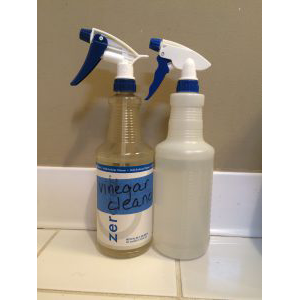
8. I limit plastics
A few years back, I started hearing about BPA (bisphenol-A), a chemical in the lining of cans that is linked to breast cancer. So I stopped using canned foods (as much as possible anyway). Then I found out it was in plastic bottles, including the sippy cups and food storage containers I was using. So I gradually bought glass food storage containers, stainless steel and glass bowls for food preparation, and stainless and glass bottles for drinking water. It seems expensive to replace all your plastic ware, but you don’t have to do it all at once! Look for sales on food storage sets, check Groupon for stainless bottles, and places like Costco sell stainless bowl sets. If you take your food to work and microwave it, definitely store your lunch in glass. Microwaving plastics heats the molecules of the container and can leach those molecules into your food. Yuck! I started taking cold food (salads) or my soup or other hot food in a Thermos. Remember those?
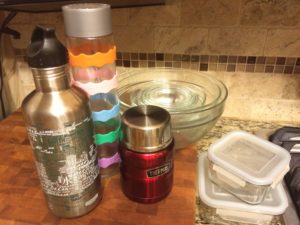
I also try to buy wooden toys when possible instead of plastics. This is hard because they can be expensive, and sometimes hard to find. But they’re really nice when I can get them! They also may resell well if you sell on consignment…
These are some of the things I do to limit unnecessary chemical exposures in our home. I didn’t do all of this at once, just one at a time. What kinds of things do you want to do to limit your chemical exposures? How can you live your best purified life?
* volatile organic compounds (VOCs) are chemicals that are released into the air from the thing they are part of. Imagine fumes from nail polish or remover, paint and paint thinner, new car smell, the plasticky smell of new furniture…

Comments10
Learn so much reading this.
Thank you for reading! Your support means so much!
Thank you Andrea. Love all the knowledge.
Thanks for reading!
Thank you Andrea. We are never too old to receive this valuable and life saving information. Thank you for being a blessing. Keep allowing GOD to use you as an instrument of HIS healing!
Thank you for sharing. I really took interest in your post about laundry detergent. My daughter has “eczema” and I found myself spending almost $15 on one bottle of liquid baby gentle detergent. I would like to try making my own. Where do you buy the soap flakes you use?
I’ve bought the Fels Naptha at Walmart in bars. Be warned through, there are some perfumes in this bar. You may want to use an unscented olive oil soap like Kiss My Face (it will be more expensive than Fels Naptha though…). Other options are out there – you can look up many recipes online! When I buy the bars, I cut them down and grate and grind them in a food processor. If you do a lot at once, it can be stored in old plastic tubs for you to mix when you’re ready. Hope this helps!
Thanks for sharing all the good information.
Thanks for the info!! What did you replace the sippy cup with?
That’s one of the toughest ones! I have found stainless sippys, but most of them are tough to clean. Maybe I should design one…
In any case, I found a set of enamel covered tin dishes that came with a cup, so at home the youngest doesn’t have to use plastic cups. It’s also not a sippy though, just a small child sized cup with a handle. Your little one will be able to use a regular cup soon! In the meantime, look for BPA free plastics if you can’t find a stainless sippy you like. Hang in there!